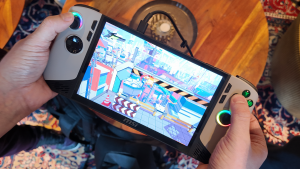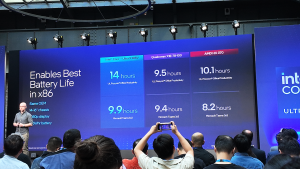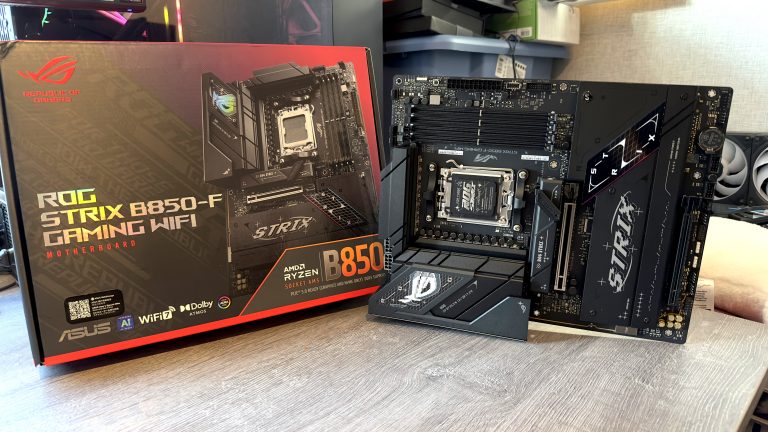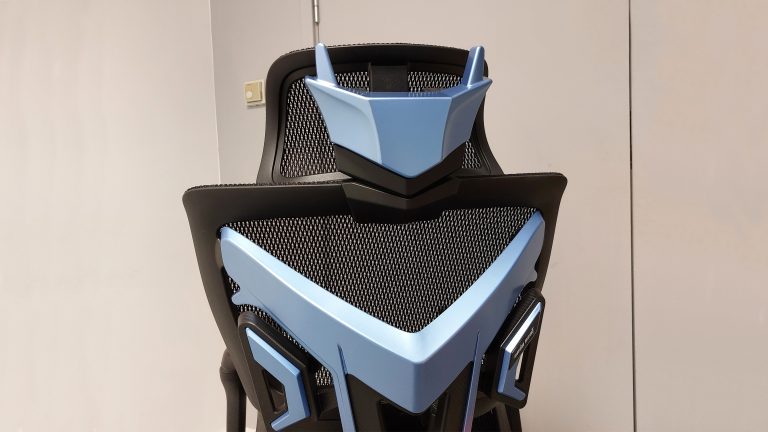Intel has finally unveiled details of its brand new Lunar Lake mobile processors. While these chips are primarily focused on low power operation, mostly intended for your next office laptop, there is good news for gamers. Intel is talking a big game for the new Xe2 iGPU found inside these chips.
Lunar Lake is the first product out of Intel built using its latest GPU architecture, Xe2. Its top configuration for Lunar Lake, called the Arc 140V GPU, will come with eight Xe-cores. That’s the same number as the top Meteor Lake GPU, though Intel has already promised other upgrades to improve performance and consistency.
There’s also a smaller option, with seven Xe-cores, called the Arc 130V GPU.
One Xe-core likely won’t make a huge difference to performance. According to Damien Triolet, director of GPU technical marketing, it shouldn’t matter much at all.
“My expectation is that the difference is not necessarily going to be huge, where you will see more deltas is really from design to design,” Triolet tells me.
Though we’ll see how that shakes out in testing. Either way, if you’re looking for top gaming performance without a discrete GPU in a laptop, you’ll want to look for the 140V in the upper echelons of the line-up.
Similarly, Lunar Lake shares on-package memory between CPU and GPU. There are two memory configurations available, 16 GB or 32 GB of LPDDR5X-8533, and the larger option will no doubt be the best chance at high performance.
Before we get into Intel’s benchmarks, here are the Core Ultra 200V Series specifications in full:
Over at the Lunar Lake launch event in Berlin, Intel’s Robert Hallock said of the new chips: “I’m not going to call it a gaming CPU, but, damn, it can play a game.”
(Image credit: Future)
Talking a big game, then.
Intel does provide some benchmarks for our consideration ahead of the Core Ultra 200V’s release later this month. All of which are carried out at 1080p. Figures for us to ponder over before our own benchmarking—even though Intel did evangelise the benefits of even-handed benchmarking at the event, I don’t need to spell out why independent results are still best.
Intel claims a 31% increase in gaming performance across a range of games with the Core Ultra 9 288V (140V GPU) versus its previous generation Core Ultra 7 155H.
(Image credit: Intel)
(Image credit: Intel)
That’s a pretty decent uplift over what was, driver pending, a pretty playable 1080p experience on Meteor Lake.
That’s an eight Xe-core Xe2 GPU going up against an eight Xe-core Xe GPU. However, the 155H is not the top Meteor Lake chip. The Core Ultra 9 185H might make for a better comparison for the slightly faster GPU clock it offers over the 155H, at 2.35 GHz to 2.25 GHz, though it has a higher TDP than Lunar Lake’s finest. All of which is to say, it’s not exactly apples to apples but somewhere close.
More crucially, Intel claims a 16% improvement across a range of games over AMD’s latest Ryzen AI 9 HX 370, the same chip I recently tested inside the Asus Zephyrus G16 2024.
(Image credit: Intel)
The AMD test system is a pretty close match to the one used for Lunar Lake, with both systems running 32 GB of RAM. Though the Intel system runs faster LPDDR5X memory at 8,533 MT/s to 7,500 MT/s on AMD. The Intel system does also use a newer Windows version: 26100.1301, compared to 26100.1150 on AMD. I’d take a guess that the newer Windows version includes updates to utilise Intel’s new Thread Director in Lunar Lake.
Intel spent far less time making comparisons to AMD at the Lunar Lake event than it did Qualcomm. Clearly, Qualcomm’s latest laptop chips have got under Intel’s skin a little, hence why Intel was keen to point out that 23 games in its test suite didn’t run on the Qualcomm X1E-84-100 chip it tested.
Though in the games that did run, Intel claims a whopping 68% increase in fps over the Qualcomm chip.
(Image credit: Intel)
Altogether a good showing for 1080p gaming on Lunar Lake, and on a chip unlikely to be used widely as a gaming chip. We will see at least one 200V Series-powered handheld appear at some point, that’s the MSI Claw 8 in January, and OEMs might stuff Lunar Lake alongside discrete graphics, too.
Though Intel might not have been too keen to include those games that don’t play so nicely on Intel systems—the list of which has been generally shrinking since Alchemist discrete cards were first released, though issues to which they’re still not entirely immune.
Intel says it’s focused on streamlining the Xe2 architecture in order to cut incompatibilities and increase utilisation—two things its first gaming architecture suffered from. For the sake of future Lunar Lake handheld gaming PCs, I sure hope it’s managed to do just that.
Triolet does tell me that the software stack, the drivers bringing it all together, should at least be improved by the time we get our hands on Lunar Lake and Xe2 in discrete form.
“We use the same software stack across our GPU family, and the software stack today is the most stable it’s ever been. And it makes sense, right? We’ve been working on that for the past few years.”
The Xe2 architecture seen here is one and the same with that set to feature within Intel’s upcoming Battlemage discrete GPUs. Unfortunately, the company is not talking about those just yet. Here’s hoping we’re not left waiting much longer.











